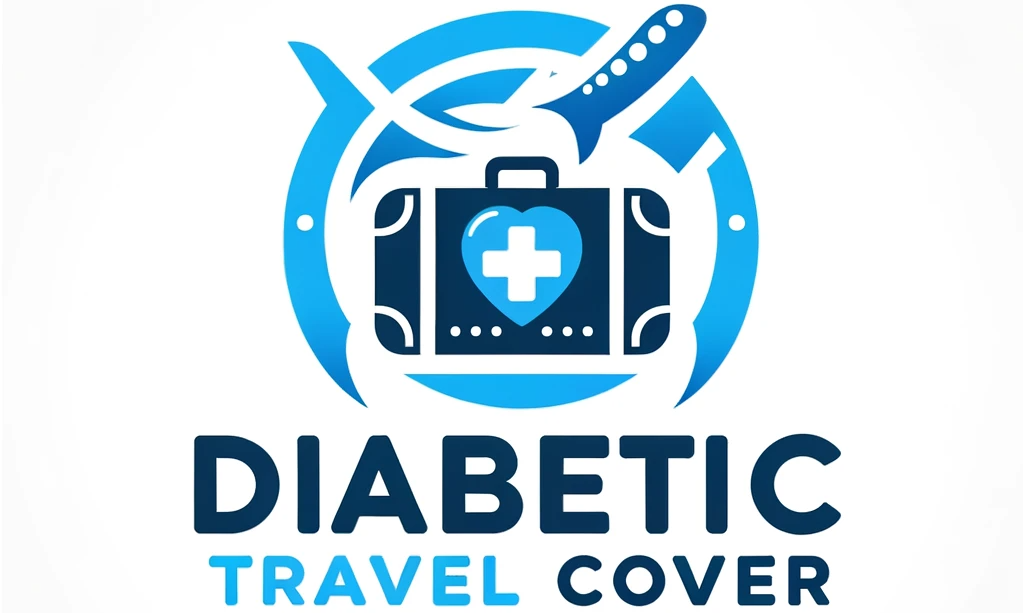Are you a diabetic individual who loves to travel and explore new destinations? If so, coping with altitude changes can pose a unique challenge for you. As you venture into high-altitude locations, it is important to be prepared and take certain precautions to ensure your safety and well-being. In this article, we will provide you with valuable advice and tips specifically tailored for diabetic travelers, helping you navigate altitude changes with confidence and ease.

Understanding the Effects of Altitude on Blood Glucose Levels
Altitude can have a significant impact on blood glucose levels for individuals with diabetes. This is due to various factors, such as changes in metabolism, insulin sensitivity, and the relationship between hypoxia (low oxygen levels) and hyperglycemia (high blood sugar). By understanding these effects, individuals can better prepare and manage their diabetes while traveling to high-altitude destinations.
How altitude affects glucose metabolism
When exposed to high altitudes, the body goes through physiological changes to cope with the lower oxygen levels. These changes can affect glucose metabolism, leading to fluctuations in blood sugar levels. The body may release more stress hormones like cortisol, which can cause insulin resistance and impair glucose uptake by the cells. Consequently, blood glucose levels may rise, making it essential to closely monitor and manage diabetes during travel at high altitudes.
Impact of altitude on insulin sensitivity
At higher altitudes, insulin sensitivity can be reduced. This means that the body’s cells may not respond as effectively to insulin, the hormone responsible for regulating blood sugar levels. As a result, more insulin may be required to achieve the desired blood glucose control. It’s important to work with your healthcare provider to adjust your medication dosage accordingly and ensure adequate insulin supply during your trip.
Relationship between hypoxia and hyperglycemia at high altitudes
Hypoxia, or low oxygen levels, is a common occurrence at high altitudes. Studies have shown that hypoxia can contribute to an increase in blood sugar levels. It can impair the body’s ability to utilize glucose effectively, leading to hyperglycemia. This can pose a challenge for individuals with diabetes, as it may necessitate adjustments in medication, diet, and overall diabetes management strategies.
Pre-Travel Consultation
Before embarking on a trip to high-altitude destinations, it is crucial to have a thorough discussion with your healthcare provider. This pre-travel consultation serves several essential purposes, such as assessing potential risks, discussing adjustments to your diabetes management plan, and addressing any concerns or questions you may have.
Importance of discussing travel plans with healthcare provider
Keeping your healthcare provider informed about your travel plans is essential for optimal diabetes management. They can provide valuable guidance and recommendations based on your unique medical history and current health condition. Your healthcare provider may also suggest specific precautions or adjustments to your diabetes management plan to ensure your trip goes smoothly.
Assessment of potential risks
During your pre-travel consultation, your healthcare provider will assess the potential risks associated with traveling to high altitudes with diabetes. They will consider factors such as your overall health, the duration of your trip, the altitude you will be exposed to, and the availability of medical facilities at your destination. This assessment will help determine the necessary precautions and strategies for managing your diabetes effectively during your journey.
Risk adjustment measures for diabetes management at high altitudes
Based on the assessment of potential risks, your healthcare provider may suggest specific risk adjustment measures for managing your diabetes at high altitudes. These measures can include medication dosage adjustments, additional monitoring of blood glucose levels, dietary modifications, and contingency plans for emergencies. It is crucial to follow their recommendations closely to maintain good diabetes control throughout your trip.
Medication Management
Proper medication management is crucial for individuals with diabetes traveling to high-altitude destinations. Altitude can have a significant impact on insulin requirements, requiring careful planning and preparation to ensure an adequate supply of medication and proper storage and handling during your journey.
Impact of altitude on insulin requirement
Altitude can affect insulin requirements, making it essential to monitor and adjust your medication accordingly. Some individuals may find that they require more insulin at high altitudes, while others may need less. Regular blood glucose monitoring is key to determining the appropriate insulin dosage and maintaining optimal blood sugar control. Working closely with your healthcare provider is vital to navigate these changes effectively.
Pre-travel prescriptions: getting enough supply of medication
Before your trip, it is crucial to ensure that you have an adequate supply of medication. Depending on the duration of your travel, you may need to discuss with your healthcare provider the need for additional prescriptions to cover the entire trip. Obtaining these prescriptions in advance will provide peace of mind and prevent any medication shortages during your journey.
Safe storage and handling of insulin at different altitudes
Insulin needs to be stored and handled properly, especially when traveling to different altitudes. Extreme temperatures, both hot and cold, can affect the potency and efficacy of insulin. It is vital to keep insulin within the appropriate temperature range recommended by the manufacturer. Consider using insulated travel cases or cool packs to protect your insulin during your journey.
Alternative diabetes medications for high altitude
For some individuals, alternative diabetes medications may be recommended for travel to high altitudes. Your healthcare provider may suggest medications that are less affected by altitude-related changes or offer additional benefits in high-altitude environments. Discuss these options with your healthcare provider to determine if switching medications temporarily is a suitable approach for your trip.

Managing Blood Glucose During the Ascent and Descent
Blood glucose management during the ascent and descent can be challenging due to the rapid changes in altitude. It is crucial to be proactive and take the necessary precautions to prevent hypoglycemia during the ascent and manage potential hypoglycemia during the descent.
How to manage blood glucose during a rapid ascent
During a rapid ascent, it is essential to closely monitor your blood glucose levels. The increased stress on the body, combined with altitude-related changes, can impact blood sugar control. Regularly check your blood glucose levels and be prepared to adjust your medication or food intake as needed. Discuss with your healthcare provider any specific guidelines they may have for managing blood glucose during rapid ascents.
Dealing with potential hypoglycemia during descent
As you descend from high altitudes, the increased oxygen levels can have a lowering effect on blood glucose levels. This can increase the risk of hypoglycemia, especially if you are taking insulin or certain diabetes medications. Carry a supply of low-glycemic snacks and monitor your blood glucose levels frequently during the descent. Be prepared to treat hypoglycemia promptly if it occurs, following the instructions provided by your healthcare provider.
Werther’s Sugar-Free Hard Candies: a low-glycemic sweet for potential hypoglycemia during the journey
When managing potential hypoglycemia during your journey, having a low-glycemic snack on hand can be a lifesaver. Werther’s Sugar-Free Hard Candies are an excellent option to consider. They provide a slow release of glucose, preventing rapid blood sugar spikes while providing a tasty treat. Keep a supply of these candies in your travel bag or pocket for easy access in case of hypoglycemia.
Diet and Nutrition Considerations
Proper diet and nutrition play a vital role in managing blood glucose levels during high-altitude travel. It’s important to pay attention to your meals, hydration, and snacks to ensure optimal diabetes control throughout your trip.
Recommended meals for high-altitude travel
When planning your meals at high altitudes, aim for a balanced combination of carbohydrates, proteins, and healthy fats. Complex carbohydrates such as whole grains, fruits, and vegetables are excellent choices for providing sustained energy. Lean proteins, like skinless poultry or fish, can help stabilize blood sugar levels. Include healthy fats from sources like nuts, seeds, and avocados to promote satiety and maintain stable glucose levels.
Maintaining hydration at high altitudes
Staying hydrated is crucial, particularly in high-altitude environments. Altitude-related changes can increase the risk of dehydration, which can affect blood glucose control and overall well-being. Drink plenty of water throughout the day and minimize or avoid caffeine and alcohol, as they can contribute to dehydration. Be mindful of the signs of dehydration and take steps to replenish fluids as needed.
Snacks to maintain blood glucose levels during travel
Having healthy snacks readily available during your travel can help maintain stable blood glucose levels. Opt for snacks that combine carbohydrates with protein or healthy fats to prevent rapid blood sugar spikes. Nuts, seeds, low-sugar protein bars, and fresh fruit are excellent choices for on-the-go snacks. Pack these items in your travel bag to have easy access whenever you need a quick and nutritious snack.
Physical Activity and Exercise at High Altitudes
Engaging in physical activity and exercise can provide numerous benefits for individuals with diabetes. However, there are specific precautions and considerations to keep in mind when exercising at high altitudes.
Exercise precautions at high altitudes
At high altitudes, the reduced oxygen levels can make physical activity more challenging. It may be necessary to adjust exercise intensity, duration, or frequency to accommodate the altitude. Start with lighter activities and gradually increase in intensity as your body adjusts to the altitude. Listen to your body and take breaks as needed to avoid overexertion.
Appropriate types of physical activity at high altitudes
While at high altitudes, focus on activities that you enjoy and can engage in safely. Walking, hiking, yoga, and strength training exercises are all excellent choices. These activities can be adapted to various altitudes and allow you to maintain physical fitness while enjoying your journey. Consult with your healthcare provider or a qualified exercise professional for personalized recommendations based on your fitness level and medical history.
Impact of physical activity on blood glucose at varying altitudes
Engaging in physical activity can have varying effects on blood glucose levels depending on the altitude. The combination of exercise and altitude-related changes can impact how your body uses glucose. Monitor your blood glucose levels before, during, and after physical activity to determine how it affects your blood sugar levels. Adjust your medication and snack intake accordingly to maintain stable blood glucose levels during and after exercise.
Advanced Planning and Preparedness
To ensure a successful trip as a diabetic traveler to high-altitude destinations, advanced planning and preparedness are essential. Consider the following factors to minimize potential challenges and maximize your overall experience.

Packing essentials: medication, supplies, low-glycemic snacks
When packing for your high-altitude journey, make sure to include all necessary medications, supplies, and low-glycemic snacks. Double-check that you have an adequate supply of medication for the duration of your trip, along with any necessary prescriptions. Pack your blood glucose monitoring device, insulin or other diabetes medications, and extra batteries or supplies as needed. Don’t forget to include a sufficient quantity of low-glycemic snacks for managing potential hypoglycemia.
Communication plan with healthcare provider
Having a communication plan with your healthcare provider is crucial during your high-altitude travel. Discuss and establish the best method of communication, whether it be through email, phone calls, or telemedicine options. Share your itinerary, including important dates and destinations. This way, your healthcare provider will be aware of your plans and available to offer guidance or address any concerns that may arise during your journey.
Emergency contact information and nearest medical facilities at destination
Research and note down important emergency contact information and the nearest medical facilities at your destination. In case of unforeseen circumstances or emergencies, it’s essential to have this information readily accessible. This will save time and enable you to seek prompt medical assistance if needed. Share this information with your travel companions as well, so they are aware of the necessary steps to take in case of an emergency.
Importance of travel insurance covering diabetes management
Investing in travel insurance that covers diabetes management is highly recommended. Accidents, illnesses, or unexpected events can happen during your journey, and having adequate travel insurance can provide peace of mind. Ensure that your insurance covers any pre-existing medical conditions, including diabetes. Familiarize yourself with the policy details and contact information for the insurance provider, should the need for assistance arise.
Diabetes Monitoring Devices and Altitude
Monitoring blood glucose levels is crucial for effective diabetes management, even at high altitudes. However, it is important to be aware of how altitude can affect the accuracy and reliability of diabetes monitoring devices.
Use of continuous glucose monitors (CGMs) at high altitudes
Continuous glucose monitors (CGMs) can be highly beneficial for individuals with diabetes, providing real-time information about blood glucose levels. Many CGMs are designed to function accurately at varying altitudes. However, it is important to consult the device manufacturer’s guidelines to ensure the proper functioning of your CGM at high altitudes. Be prepared to calibrate the device as needed and have backup solutions available in case of any issues.
Impact of altitude on device accuracy
Altitude-related changes, such as decreased atmospheric pressure, can impact the accuracy of blood glucose monitoring devices. It is essential to understand how these changes may affect the reliability of your device. Consult with the manufacturer or your healthcare provider to determine if any adjustments or precautions are necessary when using your specific device at high altitudes.
Backup solutions for glucose monitoring
To ensure continuous monitoring of your blood glucose levels, it is wise to have backup solutions in case of device malfunctions or inaccuracies. This may include carrying additional test strips, lancets, and a backup blood glucose meter. These backup solutions will provide peace of mind and allow you to maintain optimal diabetes control, even if your primary monitoring device encounters any issues.
Managing Altitude Sickness and Diabetes
Altitude sickness, or acute mountain sickness, is a common condition that can occur when traveling to high altitudes. If you have diabetes, it is essential to understand the interrelationship between altitude sickness and diabetes and have a plan in place to manage both effectively.
Recognizing symptoms of altitude sickness
Altitude sickness can present with various symptoms, including headache, nausea, dizziness, fatigue, and difficulty sleeping. These symptoms can be more pronounced in individuals with diabetes due to the additional stress on the body. It is crucial to recognize the signs of altitude sickness and take appropriate steps to address them promptly. Inform your travel companions and seek medical attention if symptoms worsen or persist.
Interrelationship between altitude sickness and diabetes
Having diabetes can potentially complicate the management of altitude sickness. Both conditions can stress the body and affect blood glucose control. Altitude sickness can also reduce appetite and lead to dehydration, further impacting diabetes management. It is important to closely monitor your blood glucose levels, stay hydrated, and take any necessary diabetes medications while managing altitude sickness symptoms.
Protocol for dealing with altitude sickness
If you experience altitude sickness symptoms, there are several steps you can take to manage the condition effectively. Resting and allowing your body time to acclimatize to the altitude is crucial. Stay hydrated by drinking plenty of fluids and be mindful of your blood glucose levels. If symptoms worsen or persist, seek medical assistance immediately. Follow the advice and recommendations of healthcare professionals to ensure an appropriate treatment plan.
Self-Care and Coping Mechanisms
While traveling to high-altitude destinations with diabetes, it is important to prioritize self-care and employ coping mechanisms to manage any challenges that may arise. Taking care of your physical and mental well-being will contribute to a more enjoyable and successful trip.
Importance of rest and sleep at high altitudes
Rest and sleep are crucial for your overall well-being, particularly at high altitudes. Altitude-related changes can lead to increased fatigue, making quality sleep even more essential. Aim for regular sleep patterns and create a relaxing sleep environment. Prioritize restful breaks throughout your journey to allow your body to acclimate and recover.
Maintaining mental health: managing anxiety and stress related to travel
Traveling to high-altitude destinations can be exciting but may also induce feelings of anxiety or stress. Managing these emotions is important for your overall well-being and diabetes management. Practice stress management techniques such as deep breathing exercises, meditation, or engaging in activities that help you relax and unwind. Stay connected with your support system, whether it be friends, family, or online communities, to help you navigate any emotional challenges during your journey.
Understanding body signals and proactive response to symptoms
Understanding and interpreting your body’s signals is crucial when managing diabetes and traveling to high altitudes. Pay close attention to any symptoms or changes you may experience, such as changes in blood glucose levels, dizziness, or fatigue. Having a proactive response to these signals will enable you to address them promptly and take appropriate action to ensure your well-being.
Dealing with issues of fatigue and breathlessness
High altitudes can often induce feelings of fatigue and breathlessness, particularly during physical activity. It is important to know your limits and adjust your activities accordingly. Don’t push yourself too hard and take breaks as needed. Allow your body to adjust to the altitude gradually, and prioritize rest and relaxation to combat fatigue.
In conclusion, understanding the effects of altitude on blood glucose levels is crucial for individuals with diabetes planning to travel to high-altitude destinations. By taking necessary precautions, engaging in proper medication management, adopting a balanced diet, and employing coping mechanisms, individuals can successfully manage their diabetes while enjoying their journey. Remember to consult with your healthcare provider and be proactive in your diabetes management to ensure a safe and enjoyable high-altitude travel experience.

